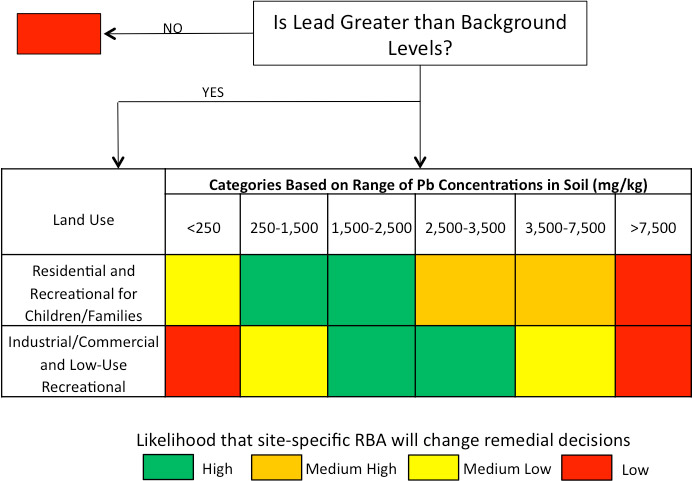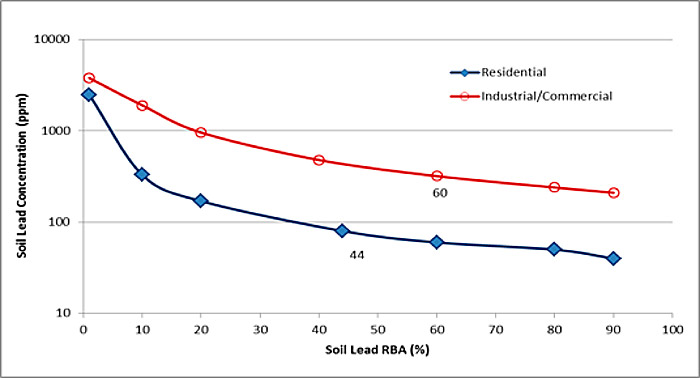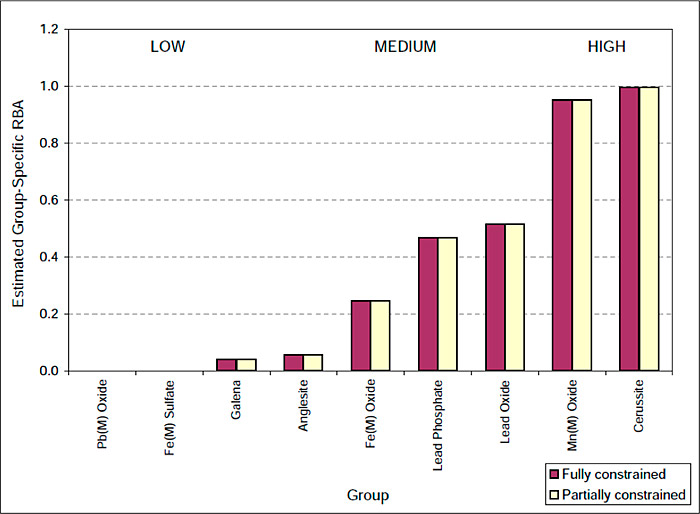6.4 When Does a Lead Bioavailability Study Make Sense?
Key considerations for determining the value and applicability of a lead site-specific bioavailability assessment include the following:
- comparison of background to site lead concentrations
- volume of contaminated soil, lead concentrations, and desired land use
- soil characteristics such as soil type, organic carbon content, clay content, and pH
6.4.1 Comparison of Background to Site Lead Concentrations
Prior to evaluating the bioavailability of lead in soils, soil lead concentrations should be compared to background levels.
6.4.2 Lead Concentrations and Land Use
Soil lead concentrations and land use are interrelated factors in determining remediation goals and affect remediation priorities. Residential areas that are given highest priority for soil remediation are defined as any areas with high accessibility to sensitive populations, including family homes, apartment buildings, vacant lots in residential areas, schools, daycares, community centers, playgrounds, parks, greenways, and any other areas where children are at risk of exposure (USEPA 2003c). Other areas may be given lower priority and, with proper institutional controls, may be held to less stringent remedial goals.
6.4.3 Deviation from Default Bioavailability Value
Bioavailability values are used in lead exposure risk models developed by USEPA and other agencies, such as California DTSC, to predict BLLs in adults and children. Lead exposure risk models can be used to establish screening levels/PRGs specific to sites contaminated with lead.
6.4.4 Lead Sources and Soil Type
Site-specific conditions that might warrant a bioavailability study for lead can include differences in lead form (mineral phase) and particle size as well as heterogeneity in soil physiochemical properties across a site—factors that could be sources of variability in an RBA. More soluble lead minerals are generally more bioavailable than less soluble minerals. Likewise, the bioavailability of lead would decrease with increasing particle size. For example, an RBA would be lower for soil with larger lead particles such as mine tailings or firing range debris relative to more weathered sources with finer particle sizes and greater surface area (USEPA 2003c).





